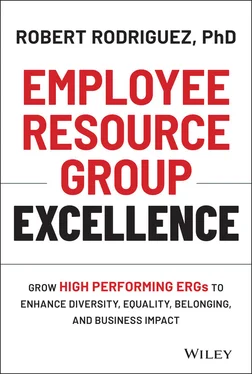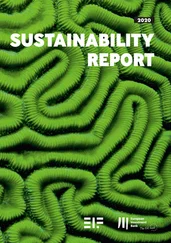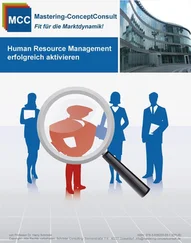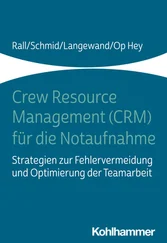The allocation of budgets varies from organization to organization. Some companies allocate ERG budgets based on membership, with ERGs that have larger membership receiving more funds than ERGs with fewer members. Other organizations allocate funds based on a business plan. An ERG puts together a business plan for the year indicating its planned initiatives, including an estimation of how much they will need to successfully execute these initiatives. The company then determines how much of their requested budget outlined in their plan they can give an employee resource group. Some companies provide every ERG the same budget amount, regardless of the size of the group. And some companies, albeit only a few, charge employees a fee to become a member of an ERG, and these fees help to fund the employee resource group. I am aware of several organizations where employees pay an annual fee of $25 to be a member of an employee resource group. Interesting approach indeed.
Once launched, employee resource groups tend to go through a natural evolution over time. Initially, the ERG tends to focus on the more social aspects of the group with a concentration on building community via events promoting networking and establishing connections with people of similar background or interest. Over time, ERGs expand their focus to include career development initiatives for their members and an increased emphasis on external community outreach. Eventually, they launch initiatives aimed at having a greater alignment with business priorities and organizational goals.
And yet, despite this increased impact, many ERGs are in the midst of a major inflection point fraught with uncertainty about what direction to take to remain relevant. We have to ask ourselves why some employee resource groups have prospered, while others have floundered. How do external trends impact this internal groups? What unexpected challenges await today's ERGs? And what principles must ERGs live by in order to effectively deal with the changing landscape of contemporary global business?
While some managers marginalize and trivialize ERG contributions, other leaders fully appreciate the value ERGs can provide as they feel a sense of responsibility to addressing pressing societal and business issues if they are to build a global inclusive and respectful workplace and develop a global workforce competent to work effectively with an even more diverse set of colleagues and clients.
Seeing Global ERGs as Simply Overseas Extensions of US Groups
Some organizations are worried that a typical response to diversity and inclusion will make them fall short of their goals. That is, seeing global ERGs as simply overseas extensions of US diversity initiatives. As ERGs have gone global, companies have found the most success with groups dedicated to women, LGBT employees, and those with disabilities. Young professionals have also lent themselves to a global ERG approach as they face some shared challenges within organizations around the world. These kinds of networks continue to proliferate quite naturally.
Some efforts flow from a master global strategy while others surface quite organically in the absence of a global strategy, in response to the universal experience of societal pressures, taboos, and even legal restrictions that force people to hide who they truly are in order to have a chance at success.
Going global opens up additional unexpected dimensions that have universal appeal. For instance, one professional services firm has a Global Athlete's Network, which aims to connect people “who are involved in and passionate about the top echelons of sport,” including high‐level coaches, elite athletes, and those involved in organizing major sporting events or training camps.
The objectives of this group are instructive in the unique take they have on the role of sports in networking within the organization. The following goal and objectives are listed on the company's intranet:
The goal of the network is to gather insights and ideas so that we can offer a unique perspective to clients. To realize this goal, we have established a set of objectives that address the firm's client and talent agendas:
Establish a global network of people with a common interest in elite sport, who can share knowledge and experience ranging from training tips to managing a balanced lifestyle.
Provide a real example of where our talent is “Always one step ahead” that illustrates our company's commitment to high performance, flexibility, and choice.
Apply high performance and coaching expertise to our business.
Support the development of a center of excellence in delivering major sporting events that can be leveraged throughout the global organization through sporting event knowledge.
So far, the network covers 28 countries and 24 Olympic sports.
Addressing the issue of race and ethnicity around the globe is a greater challenge, however. How does a Latino employee group go global when Latinos in Latin America are the majority and find the whole concept of ERGs foreign? How does an African American group establish a global presence when many Africans look at Black ERGs and see them as more American than African? How do companies address race and ethnicity in places like Peru, China, and France, where people prefer to talk about things other than race (even when they indeed have racial and ethnic societal tensions)?
Accelerating the evolution of ERGs so that they address both domestic and global diversity and inclusion issues will be explored throughout the book. Pushing ERGs to have a holistic value proposition as they strive toward excellence is the main focus of this book.
Before launching into tips and strategies on how to achieve ERG excellence, it is important to determine the environment that ERGs are operating in today. These trends have been forming for the last 36–48 months but were accelerated in 2020 due to the global Covid‐19 virus pandemic. Employee resource groups have had to learn to pivot and adjust in a world where people are coping with a pandemic, struggling with economic uncertainty, dealing with racial inequality, and adjusting to working from home.
Yet even with all these headwinds, employee resource groups are still prevailing. Their resiliency is impressive. Such resiliency is why employee resource groups have existed in corporate America since the early 1970s. In 1970, Joseph Wilson, the former CEO of Xerox, and Xerox's Black employees launched the National Black Employees Caucus. This caucus is considered by most to be the nation's first official employee resource group. The ability for employee resource groups to evolve ever since is what keeps them relevant and what allows them to persist and endure, even in the most difficult workplace environments. With a better understanding of ERG basics and insights about the environments ERGs are operating in, let's explore the trends that are shaping ERGs today and informing how they will operate tomorrow.
Alignment with Talent Management
Organizations are leveraging employee resource groups not only to help them groom their next generation of company leaders but also to make ERGs a destination for existing leaders. ERGs help companies identify an even larger, more diverse, pool of employees who have the potential to become leaders. But now, companies are also encouraging those deemed high performers, and as having high potential, to consider becoming more actively involved with ERGs.
Employee resource groups have always provided leadership development opportunities, especially for ERG leaders. Imagine being an employee who is an individual contributor in their current role with limited opportunities to demonstrate their leadership capabilities. Now put that same employee as the leader of an employee resource group, and suddenly the employee is developing a strategy, leading a team, managing a budget, establishing new relationships with co‐workers, and raising their visibility and exposure to corporate executives. Access to such leadership experiences is often a reason many employees join an employee resource group.
Читать дальше












